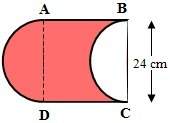
Mathematics, 12.09.2019 23:10 GrinReaperXll
Let e1 = (1; 0; 0), e2 = (0; 1; 0), and e3 = (0; 0; 1). show that if (i; j; k) is equal to (1; 2; 3) or (2; 3; 1) or (3; 1; 2) then ei x ej = ek. then show that if (i; j; k) is equal to (3; 2; 1) or (2; 1; 3) or (1; 3; 2) then ei x ej = -ek. (note: this problem is really looking at left and right handed coordinate systems.)

Answers: 3


Other questions on the subject: Mathematics

Mathematics, 21.06.2019 15:30, bajus4121
The table below represents a linear function f(x) and the equation represents a function g(x): x f(x) −1 −5 0 −1 1 3 g(x) g(x) = 2x − 7 part a: write a sentence to compare the slope of the two functions and show the steps you used to determine the slope of f(x) and g(x). (6 points) part b: which function has a greater y-intercept? justify your answer. (4 points)
Answers: 3

Mathematics, 21.06.2019 18:00, sophiamoser
Julius sold five times as many computers as sam sold last year. in total, they sold 78 computers. how many computers did julius sell?
Answers: 1

Mathematics, 21.06.2019 18:30, wiredq2049
Ill mark the brainliest if you me with the these three questions 7,8,9
Answers: 2

Mathematics, 21.06.2019 21:10, linettepizarro1233
See attachment below and find the equivalent of tan(∠qsr)
Answers: 3
You know the right answer?
Let e1 = (1; 0; 0), e2 = (0; 1; 0), and e3 = (0; 0; 1). show that if (i; j; k) is equal to (...
Questions in other subjects:













